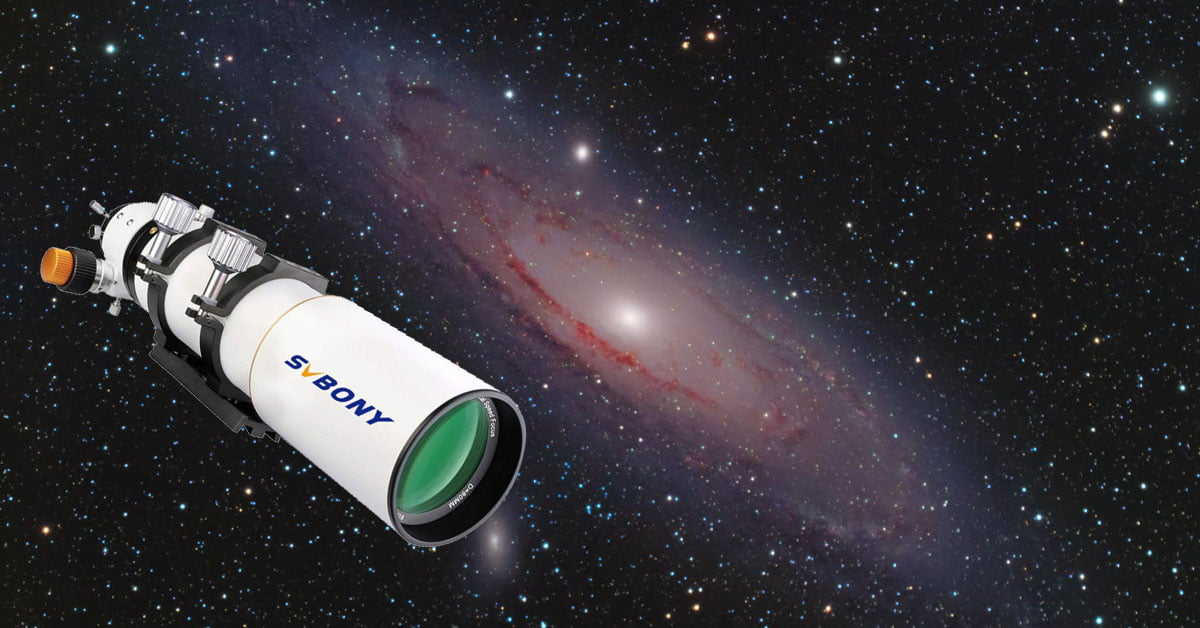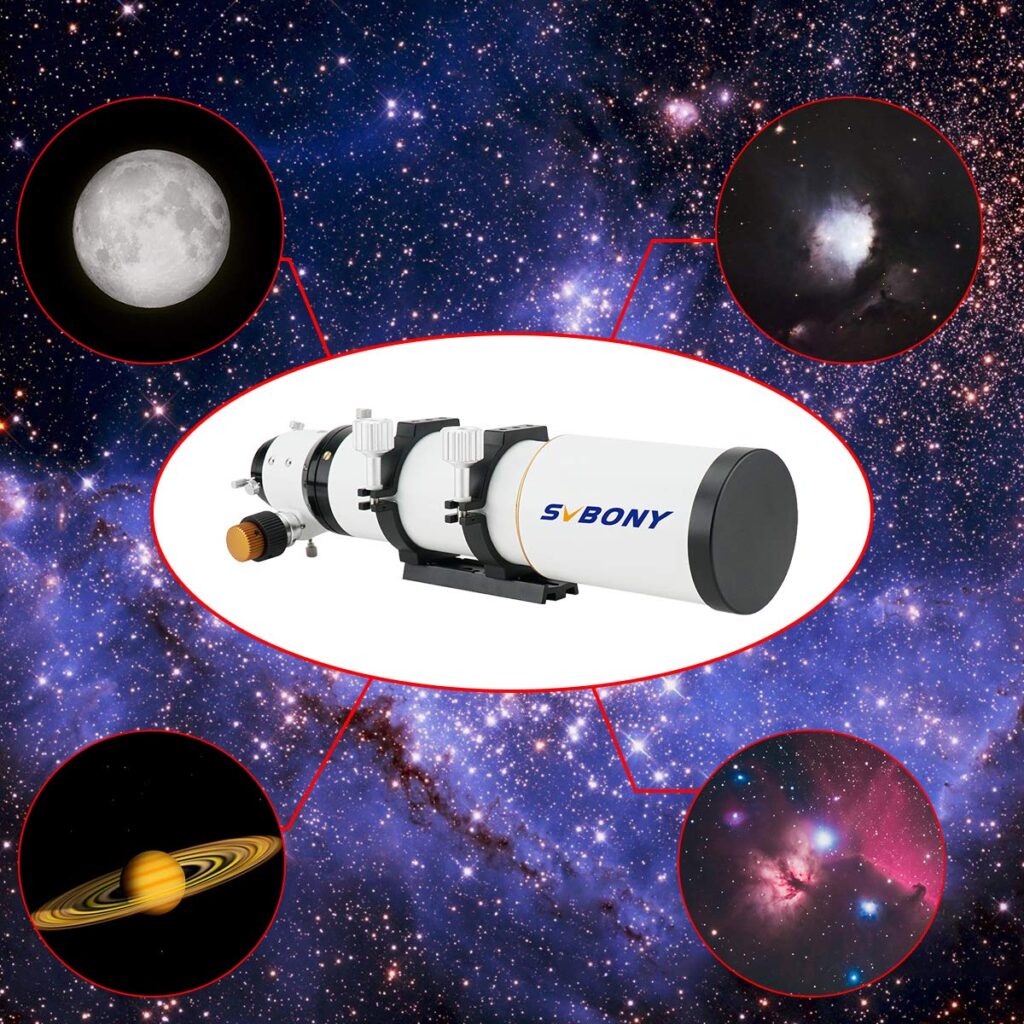Discover the benefits of sweatbands for your fitness routine. Enhance your performance and stay comfortable with these stylish and functional accessories.


Welcome to our comprehensive guide on refracting telescopes, the ultimate tool for stargazing enthusiasts. In this article, we will take you through everything you need to know about refracting telescopes, from their history and design to their advantages and disadvantages. Whether you are a beginner or an experienced astronomer, this guide will provide you with all the information you need to make an informed decision when choosing a refracting telescope.
A refracting telescope, also known as a refractor, is a type of optical telescope that uses a lens to gather and focus light. It is the oldest type of telescope and is widely used by amateur astronomers and professionals alike. Unlike reflecting telescopes that use mirrors to gather light, refracting telescopes use lenses made of glass or other transparent materials. The lenses in a refracting telescope bend or refract light, hence the name “refracting telescope.”
Refracting telescopes have a rich history that dates back to the early 17th century. Dutch mathematician and astronomer, Hans Lippershey, is often credited with the invention of the telescope in 1608. Lippershey’s telescope was a refracting telescope with a convex objective lens and a concave eyepiece lens. However, it was Galileo Galilei who made significant improvements to the design, allowing him to make groundbreaking astronomical observations.
Throughout the centuries, refracting telescopes continued to be refined and improved. The use of achromatic lenses, which reduce chromatic aberration, became widespread in the 18th century, greatly enhancing the image quality of refracting telescopes. Today, modern refracting telescopes incorporate advanced optics and technology to provide clear and detailed views of celestial objects.

Refracting telescopes work based on the principles of optics and the refraction of light. The main components of a refracting telescope are the objective lens, which collects and focuses the incoming light, and the eyepiece, which magnifies the image formed by the objective lens. When light enters the objective lens, it is refracted and brought to a focus point, forming an image. This image is then magnified by the eyepiece, allowing the viewer to see distant objects in greater detail.
The objective lens is the most important part of a refracting telescope. It is responsible for gathering and focusing the light from celestial objects. The quality of the objective lens plays a crucial role in determining the performance and image quality of the telescope. Objective lenses are typically made of high-quality glass or other transparent materials and are carefully shaped and polished to minimize aberrations and distortions.
The eyepiece is the component that magnifies the image formed by the objective lens. It is located at the opposite end of the telescope from the objective lens. Eyepieces come in various designs and focal lengths, allowing users to achieve different levels of magnification. By swapping out eyepieces, astronomers can customize the magnification of their refracting telescopes to suit their observing needs.
In addition to the optical components, refracting telescopes are also mounted on a sturdy mount and tripod. The mount allows for easy movement and tracking of celestial objects, while the tripod provides stability and support. There are various types of mounts available, including alt-azimuth mounts and equatorial mounts, each with its own advantages and disadvantages.
Refracting telescopes offer several advantages that make them a popular choice among astronomers:
Refracting telescopes require minimal maintenance compared to reflecting telescopes. Since they do not use mirrors, there is no need for regular collimation or alignment. This makes refracting telescopes a hassle-free option for beginners and casual stargazers.
Refracting telescopes are known for their excellent image quality. The use of high-quality lenses and the absence of central obstructions, such as secondary mirrors, result in clear and sharp images with minimal aberrations. This makes refractors ideal for observing planets, the Moon, and other celestial objects that require high-resolution views.
Refracting telescopes are versatile instruments that can be used for a wide range of observations. They are well-suited for both terrestrial and astronomical viewing, making them a great option for birdwatching, wildlife observation, and astrophotography.
Refracting telescopes are generally more compact and portable compared to reflecting telescopes. Their simple and lightweight design makes them easy to transport and set up, allowing users to take their telescopes to different locations for stargazing adventures.

While refracting telescopes have many advantages, they also have some limitations:
Refracting telescopes tend to have smaller aperture sizes compared to reflecting telescopes. The aperture size determines the amount of light a telescope can gather, which directly affects the brightness and level of detail visible in the images. Smaller apertures can limit the telescope’s ability to observe faint and distant objects.
One of the primary challenges of refracting telescopes is chromatic aberration. This optical distortion occurs when different colors of light focus at slightly different points, resulting in color fringing around bright objects. While modern refractors use achromatic or apochromatic lenses to minimize this effect, some degree of chromatic aberration may still be present in lower-end models.
Refracting telescopes, especially those with larger apertures and advanced optics, can be more expensive compared to reflecting telescopes. The precision manufacturing and quality materials used in refractors contribute to their higher price tag. However, there are also budget-friendly options available for beginners and those on a tight budget.
When choosing a refracting telescope, there are several factors to consider:
The aperture size is a crucial factor to consider when selecting a refracting telescope. A larger aperture allows for more light gathering, resulting in brighter and more detailed images. However, larger apertures also mean a bulkier and more expensive telescope. Consider your observing goals and budget when deciding on the aperture size.
The focal length of the telescope determines its magnification power. Telescopes with longer focal lengths provide higher magnification, while those with shorter focal lengths offer wider fields of view. Consider the types of objects you want to observe and the level of detail you desire when choosing the focal length of your refracting telescope.
Mount type is another important consideration. Alt-azimuth mounts are easier to use and more intuitive for beginners, while equatorial mounts are better suited for astrophotography and precise tracking of celestial objects. Choose a mount type that aligns with your observing preferences and skill level.
Consider your budget when shopping for a refracting telescope. There are options available for every price range, from affordable entry-level models to high-end professional telescopes. Set a budget and prioritize the features that are most important to you.

Here are some tips to help you get the most out of your refracting telescope:
If you are new to stargazing, start by observing easy targets such as the Moon and bright planets like Jupiter and Saturn. These objects are relatively easy to find and provide stunning views through a refracting telescope.
When observing in the dark, give your eyes time to adapt to the darkness. Avoid looking at bright lights or using your phone during this time, as it can hinder your night vision and make it harder to see faint objects.
When observing planets, try using higher magnifications to bring out more details. Experiment with different eyepieces to find the best magnification for each object.
Minimize vibrations and keep the telescope steady while observing. Use a sturdy tripod and avoid touching the telescope while looking through the eyepiece to prevent shaking.
Consider using filters to enhance your views of specific objects. Filters can help reduce glare, enhance contrast, and bring out subtle details in planetary and lunar observations.
There are several types of refracting telescopes available on the market, each with its own unique features and advantages. Here are some of the most common types:
Achromatic refractors are the most common type of refracting telescopes. They use a combination of two lenses, an objective lens and an eyepiece lens, to correct for chromatic aberration. The objective lens is made of two different types of glass with different dispersion properties, which help reduce the color fringing effect. Achromatic refractors provide good image quality at an affordable price, making them a popular choice for beginners.
Apochromatic refractors are high-end refracting telescopes that use a combination of three lenses to correct for chromatic aberration. These lenses are made of specialized glass materials that have very low dispersion properties, resulting in minimal color fringing. Apochromatic refractors offer superior image quality and are highly prized by astrophotographers for their ability to capture sharp and detailed images of celestial objects.
Doublet and triplet refractors refer to the number of lenses in the objective lens of a refracting telescope. Doublet refractors have two lenses, while triplet refractors have three lenses. The additional lens in triplet refractors helps to further correct for optical aberrations, resulting in even better image quality. Triplet refractors are typically more expensive but offer superior performance, especially for astrophotography.
Refracting telescopes can also be categorized based on their focal length. Long-focus refractors have a longer focal length, which allows for higher magnification and narrower fields of view. They are well-suited for observing planets and other small objects. On the other hand, short-focus refractors have a shorter focal length, which provides wider fields of view and lower magnification. They are ideal for capturing large objects like star clusters and galaxies.
While refracting telescopes are generally reliable and easy to use, you may encounter some common issues. Here are a few troubleshooting tips:
If you are experiencing blurry images, the most likely cause is poor focus. Adjust the focus knob on your telescope to achieve a clear image. If the problem persists, check if the objective lens or eyepiece lens is dirty. Clean them gently with a lens cleaning solution and a microfiber cloth.
If you notice color fringing around bright objects, you may be experiencing chromatic aberration. This can be caused by a low-quality objective lens or a misaligned lens. Check if the lenses are properly aligned and consider using an achromatic or apochromatic refractor to minimize chromatic aberration.
If your telescope is vibrating or shaking, it can make it difficult to achieve a steady image. Make sure your telescope is properly mounted on a sturdy tripod. Avoid touching the telescope while observing and use a remote shutter release or a timer delay on your camera to minimize vibrations during astrophotography.
If you are having trouble tracking celestial objects, check if your mount is properly balanced and aligned. Calibrate the mount according to the manufacturer’s instructions and practice using slow and smooth movements to track objects. Consider using a motorized mount for more precise tracking.

Here are some reviews from the general public about refracting telescopes:
“I recently purchased a refracting telescope and I am extremely happy with my purchase. The image quality is amazing and I have been able to observe the Moon, planets, and even some deep-sky objects. The telescope is also very portable and easy to set up, allowing me to take it to different locations for stargazing. Overall, I highly recommend refracting telescopes for anyone interested in stargazing.”
“I have been using a refracting telescope for several years now and I am very satisfied with its performance. The image clarity is excellent and the telescope is very easy to use. I especially love using it to observe the planets, as the details are incredibly sharp. The only downside is the price, as refracting telescopes can be quite expensive. However, the investment is definitely worth it for the quality of views you get.”
“I bought a refracting telescope to introduce my kids to astronomy and they absolutely love it. The telescope is very user-friendly and they have been able to observe the Moon, planets, and even some star clusters. It has sparked their interest in science and I couldn’t be happier. The only thing I would suggest is to invest in a sturdy mount, as the one that came with the telescope was a bit wobbly.”
“I have been using a refracting telescope for astrophotography and it has been a game-changer. The image quality is exceptional, and the telescope allows me to capture stunning images of the night sky. The compact design also makes it easy to transport to different locations for photo shoots. If you’re serious about astrophotography, a refracting telescope is a must-have.”
“I recently started getting into birdwatching and decided to invest in a refracting telescope. I have been using it to observe birds from a distance and the image quality is incredible. The telescope is lightweight and easy to carry around, which is perfect for my outdoor adventures. I highly recommend refracting telescopes for birdwatchers looking to get a closer look at their feathered friends.”
Yes, refracting telescopes are versatile instruments that can be used for both terrestrial and astronomical viewing. They are great for observing distant landscapes, wildlife, and other terrestrial objects.
Refracting telescopes require minimal maintenance compared to reflecting telescopes. Since they do not use mirrors, there is no need for regular collimation or alignment. However, it is always a good idea to keep the lenses clean and free from dust.
Yes, refracting telescopes can be used for astrophotography. They are especially well-suited for capturing images of the Moon, planets, and star clusters. However, for deep-sky photography, larger aperture reflector telescopes are often recommended.
Achromatic lenses are designed to reduce chromatic aberration, which is the distortion of color around bright objects. They use two lens elements of different densities to bring different wavelengths of light to a common focus. Apochromatic lenses, on the other hand, use multiple lens elements of different densities to minimize chromatic aberration even further, resulting in even sharper images.
The ability to observe faint and distant objects depends on the aperture size of the refracting telescope. Larger aperture telescopes can gather more light, allowing for better visibility of faint objects. However, the portability and ease of use of refractors make them a popular choice for casual stargazers and beginners.

Refracting telescopes are a versatile and powerful tool for stargazing and observing the world around us. They offer excellent image quality, ease of use, and portability, making them a great choice for astronomers of all levels. While they may have some limitations, such as limited aperture size and potential for chromatic aberration, refracting telescopes remain a popular and reliable option for exploring the wonders of the night sky. So, whether you’re a beginner or an experienced astronomer, consider investing in a refracting telescope to embark on your journey of discovery.
Refracting telescopes are versatile and powerful tools for exploring the wonders of the universe. Whether you are a beginner or an experienced astronomer, a refracting telescope can provide you with hours of enjoyment and discovery. By understanding the different types of refracting telescopes, troubleshooting common issues, and following the tips for using them, you can make the most out of your stargazing experiences. So, get your refracting telescope, head out under the night sky, and let the wonders of the universe unfold before your eyes.
Refracting telescopes are a fantastic tool for exploring the wonders of the night sky. Their simple yet effective design, coupled with excellent image quality, make them a popular choice among astronomers of all levels. By understanding the key features and considerations of refracting telescopes, you can choose the perfect instrument to embark on your stargazing adventures. Happy observing!